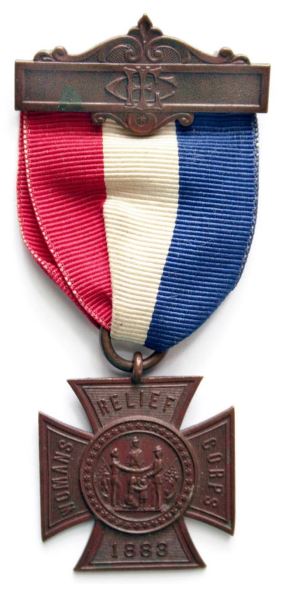Carroll Yesteryears
12 February 2017
Thaddeus Stevens Woman’s Relief Corps Significant to Carroll’s Black History
By Mary Ann Ashcraft
Although the Civil War ended more than 150 years ago, historians are still uncovering new material in many different repositories from museums to attics. I stumbled across a single page listing African American women who were members of the Thaddeus Stevens Woman’s Relief Corps No. 28 in New Windsor in 1902. What was that organization and what was its significance to Carroll’s black history? Those who study the Civil War know how enthusiastically Union soldiers formed Grand Army of the Republic (G.A.R.) posts after the war ended. The G.A.R. was a fraternal organization consisting of veterans of the Union army, navy, and marines who served in the war. Its purpose was not only social but also political. It lobbied for veterans’ pensions, supported voting rights for black veterans, and promoted patriotic education, particularly celebration of Memorial Day. Carroll had four posts—Burns in Westminster, Pickett in Winfield, Miller in Taneytown, and Thaddeus Stevens in New Windsor. Like the military, the G.A.R. posts were segregated. African Americans who had served in the United States Colored Troops (U.S.C.T.) or in any other aspect of the military could only join the Stevens Post.
Each post often had an auxiliary called the Woman’s Relief Corps with membership limited to women who had been loyal to the Union and wanted to assist the G.A.R., especially with regard to patriotic education. In many cases, the auxiliary members were probably women whose husbands fought in the war, although Mary Shellman, a dedicated member, was never married. At one point, 84 G.A.R. posts operated across the state of Maryland and almost a third of them were for African Americans, but there were fewer auxiliaries with fewer members. The officers of the Thaddeus Stevens Woman’s Relief Corps, No. 28, included Senior Vice President Cecelia Murdock whose husband Simon had served in Company F, 4th Regiment U.S.C.T. Simon returned from the war anxious to promote education for black children in the New Windsor area. He established a Sunday school, gave ground for Strawbridge Methodist Episcopal Church, and was Commander of the Stevens G.A.R. Post at one point. Obviously, patriotic service was a family affair for the Murdocks. Eliza Squirrel held the position of Conductor for the auxiliary. Her husband John was in the 28th U.S.C.T., not a regiment formed in Maryland. While African Americans from Carroll were usually members of the 4th, 7th, 9th, 19th, 30th or 39th regiments of U.S.C.T., some Carroll enlistees were assigned to units originally formed in other states, which meant they were not serving with friends from home.
Ida Woodyard was the auxiliary’s Chaplain in 1902. Her husband Andrew served aboard two different naval vessels, the Allegheny and the Crusader, according to official records. His gravestone says he served as a “steerage cook.” Some of the least desirable jobs in the military were assigned to black soldiers and sailors during the war. At the beginning of their service, the government paid them less than their white counterparts, but for those who had been slaves before they enlisted, fighting for their country in wartime guaranteed they would return home as free men.
Mary Ann Ashcraft is a library volunteer at the Historical Society of Carroll County.
 Photo credit: Historical Society of Carroll County
Photo credit: Historical Society of Carroll County
Photo caption: Members of the Woman’s Relief Corps proudly wore badges such as this one belonging to the Historical Society of Carroll County. The Maltese Cross includes the date the Corps was founded, 1883. The W.R.C. motto was “Fraternity, Charity and Loyalty.”





